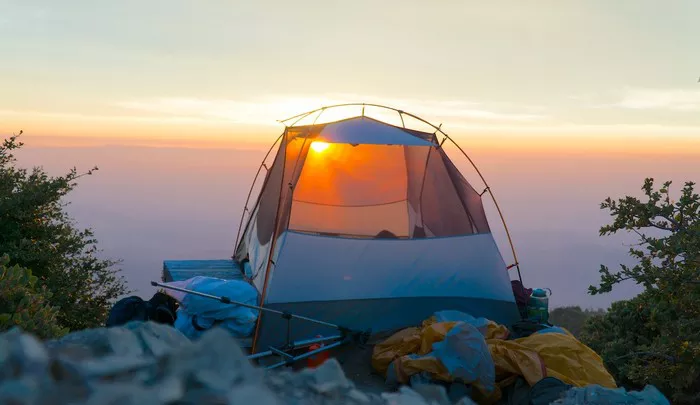Planning a camping road trip is exciting! The fresh air, beautiful scenery, and outdoor activities await you. However, packing efficiently is essential to ensure you have everything you need for a comfortable and enjoyable experience. Here’s a detailed guide on what to pack for your camping road trip.
Choosing the Right Vehicle
Before you start packing, consider your vehicle. Ensure it is suitable for a camping road trip. Here are some tips:
Space: Make sure there is enough room for passengers and gear.
Comfort: Check the comfort level for long drives. Consider seat cushions for added comfort.
Fuel Efficiency: Choose a vehicle that offers good fuel efficiency for long distances.
Camping Gear
Your camping gear is the foundation of your trip. Here’s what you need:
Tent
Size: Choose a tent that fits the number of people.
Weatherproof: Ensure it is waterproof and suitable for the weather conditions you expect.
Sleeping Equipment
Sleeping Bag: Pick a sleeping bag rated for the lowest temperature you expect.
Sleeping Pad or Air Mattress: This adds comfort and insulation from the ground.
Camping Chairs
Lightweight: Look for portable, lightweight camping chairs for relaxation around the campfire.
Lanterns and Flashlights
Lantern: A lantern provides light for the entire campsite.
Flashlights: Bring a flashlight for individual use, especially for late-night trips to the restroom.
Camping Stove
Portable Stove: A portable camping stove is essential for cooking.
Fuel: Don’t forget the fuel needed for your stove.
Cooking Equipment
Cookware: Bring pots, pans, and utensils. Consider non-stick cookware for easy cleaning.
Cutlery: Pack knives, forks, and spoons for each person.
Plates and Bowls: Lightweight, reusable plates and bowls are ideal.
Cooler: A cooler keeps perishable food fresh. Consider ice packs for longer trips.
Food Storage
Food Containers: Bring airtight containers to keep food fresh and organized.
Trash Bags: Keep the campsite clean by packing trash bags for waste.
Clothing
Dress appropriately for various weather conditions. Here’s what to include:
Layering System
Base Layer: Moisture-wicking shirts and leggings are ideal for staying dry.
Mid Layer: Fleece or insulated jackets provide warmth.
Outer Layer: Waterproof jackets protect against rain and wind.
Footwear
Hiking Boots: Comfortable, sturdy boots are a must for hiking.
Camp Shoes: Lightweight sandals or slip-on shoes for relaxing at the campsite.
Accessories
Hats: A wide-brimmed hat protects against the sun.
Gloves: Bring gloves if you expect cold weather.
Socks: Pack extra pairs of socks to keep your feet dry and warm.
Personal Items
Don’t forget to pack personal items for hygiene and comfort.
Toiletries
Toothbrush and Toothpaste: Essential for dental hygiene.
Biodegradable Soap: For washing dishes and personal hygiene.
Towel: A quick-dry towel is practical for camping.
First Aid Kit
Basic Supplies: Include band-aids, antiseptic wipes, pain relievers, and any personal medications.
Emergency Supplies: Consider adding a whistle and a space blanket.
Sunscreen and Insect Repellent
Sunscreen: Protect your skin from UV rays.
Insect Repellent: Keep bugs away, especially in wooded areas.
Safety and Navigation
Stay safe and navigate easily during your trip.
Map and Compass
Physical Map: Always have a physical map as a backup to your GPS.
Compass: A compass is useful for basic navigation.
Multi-tool or Swiss Army Knife
Versatile Tool: A multi-tool can assist with many tasks, from food prep to gear repairs.
Emergency Supplies
Emergency Blanket: Lightweight and can be crucial in cold weather.
Flashlight: Keep an extra flashlight with fresh batteries.
Entertainment
Keep spirits high during downtime.
Books or E-Readers
Reading Material: Bring along some books or e-readers for relaxation.
Games
Board Games or Cards: Compact games can entertain everyone at the campsite.
Music
Portable Speaker: A Bluetooth speaker for music can enhance the camping experience. Remember to download your favorite playlists beforehand.
Miscellaneous Items
Consider packing these items for added convenience.
Folding Table
Portable Table: A folding table is useful for cooking and dining.
Dry Bags
Waterproof Storage: Dry bags keep clothing and gear dry in case of rain.
String Lights
Ambient Lighting: String lights can create a cozy atmosphere around your campsite.
Preparing Food
Planning meals ahead can save time and ensure you eat well.
Meal Planning
Create a Menu: Plan your meals for the trip. Include breakfast, lunch, dinner, and snacks.
Pack Ingredients: Gather all the necessary ingredients for each meal.
Snacks
Non-Perishable Snacks: Nuts, granola bars, and dried fruits are great for on-the-go energy.
Packing Tips
Efficient packing makes a big difference in your experience.
Organize by Category
Use Bins or Bags: Separate items into bins or bags by category (e.g., cooking gear, clothing, toiletries).
Use Space Wisely
Maximize Space: Roll clothing instead of folding it. Fill empty spaces with smaller items.
Make a Checklist
Checklist: Create a packing checklist to ensure you don’t forget anything. Check off items as you pack them.
Final Checklist
Here’s a quick checklist to ensure you have everything before hitting the road:
- Tent and sleeping gear
- Camping stove and cookware
- Clothing and footwear
- Personal hygiene items
- First aid kit
- Navigation tools
- Entertainment items
- Food and snacks
Conclusion
Packing for a camping road trip requires careful planning and organization. By following this guide, you’ll be well-prepared for an enjoyable adventure in the great outdoors. Remember to check the weather forecast and adjust your packing list accordingly. With the right gear and supplies, you’re sure to have a fantastic time camping on the road! Happy camping!
Related topics:
- The Best Rain Shelter for Camping
- Top 5 Sleeping Mattresses for Camping
- Best Packing List for Camping

